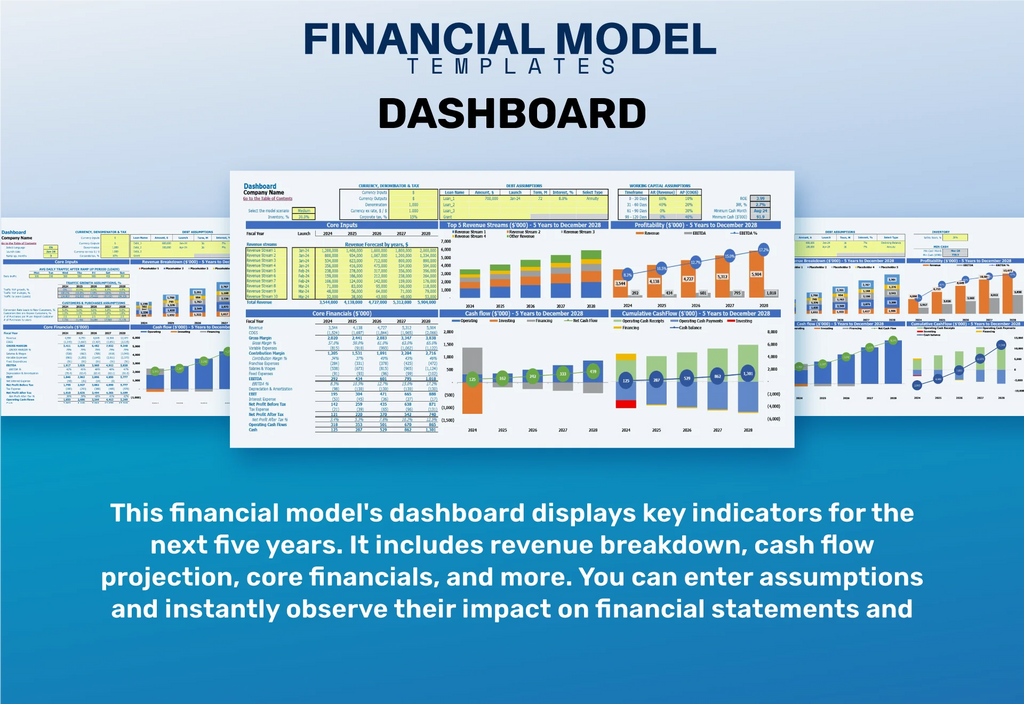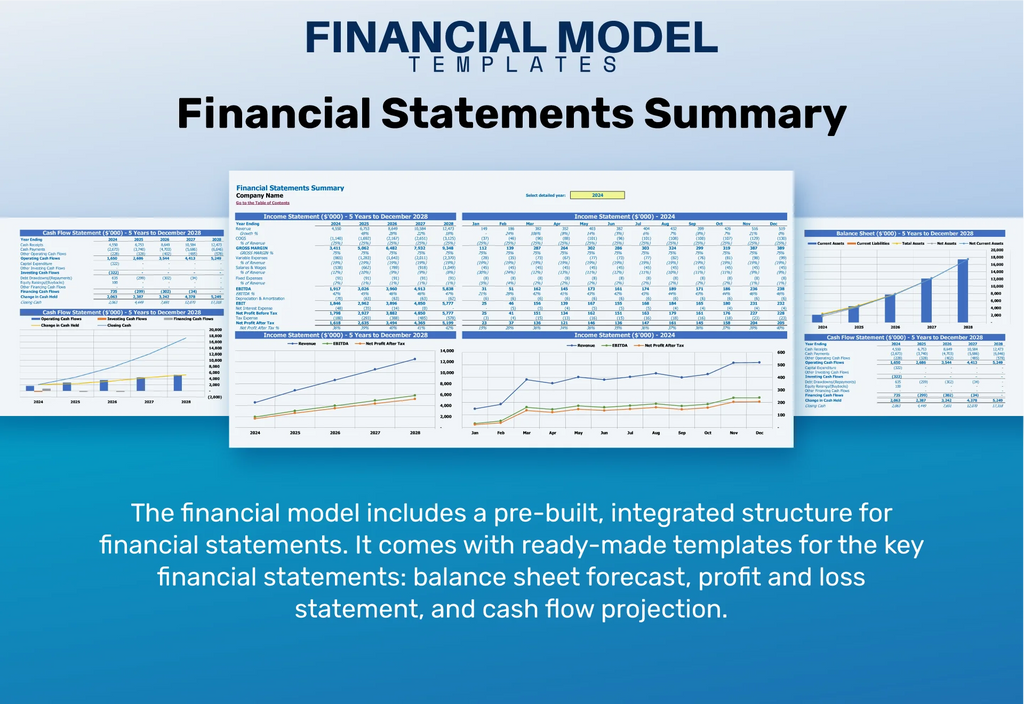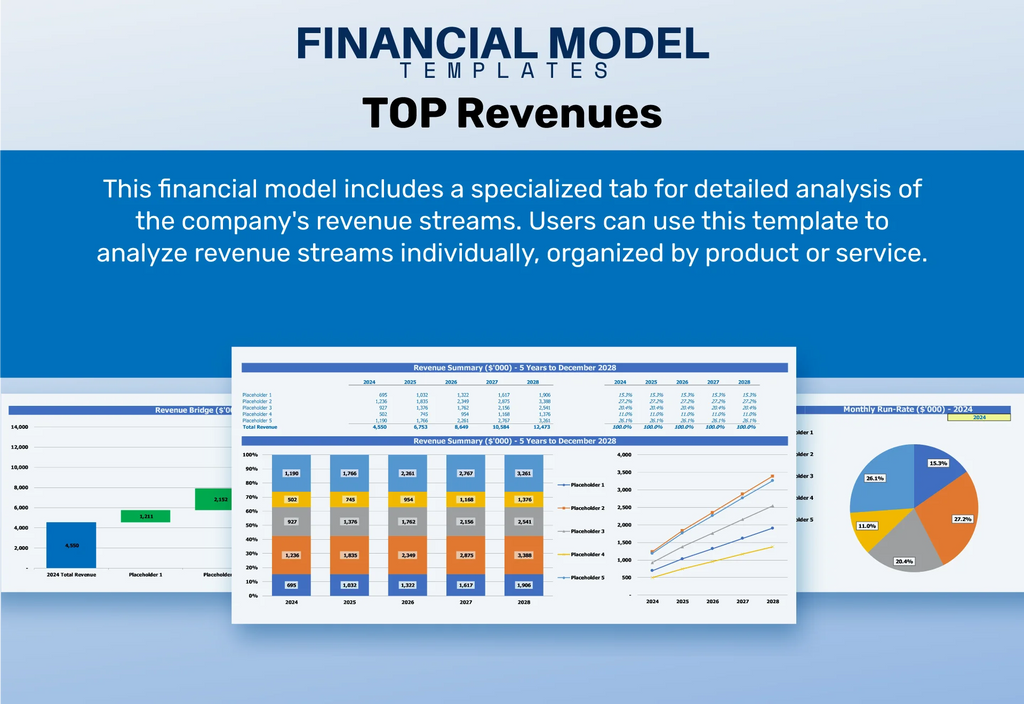Cultural Heritage Tourism Financial Model

- ✔ 5-Year Financial Projections
- ✔ 100% Editable
- ✔ Investor-Approved Valuation Models
- ✔ MAC/PC Compatible, Fully Unlocked
- ✔ No Accounting Or Financial Knowledge
Cultural Heritage Tourism Financial Model
Bundle Includes:
-
Financial Model
-
Business Plan
-
Pitch Deck
-
Financial Dashboard
ALL IN ONE MEGA PACK - CONSIST OF:
cultural heritage tourism Financial Model/Business Plan Excel Template
Pitch Deck Template For PowerPoint, Keynote & Google Slides
Business Plan Guide and Business Plan Template in MS Word Format
Financial Dashboard in Excel To Track Your Business Performance
CULTURAL HERITAGE TOURISM FINANCIAL MODEL FOR STARTUP INFO
Highlights
The development of a robust cultural heritage tourism revenue model is essential for enhancing the economic impact of cultural tourism and ensuring tourism financial sustainability. Implementing effective heritage site funding strategies, such as public-private partnerships and community-based tourism funding, can drive heritage conservation investments and support local economies. By utilizing tourism financing options and exploring cultural tourism grant opportunities, stakeholders can create a comprehensive tourism development financial framework that optimizes profit margins while fostering sustainable tourism financing. Additionally, conducting tourism impact assessments and employing finance models for cultural sites will help stakeholders engage in informed cultural tourism financial planning, ultimately leading to significant economic benefits and an enduring investment in cultural heritage.
This financial model offers pain relievers for cultural heritage tourism stakeholders by providing a comprehensive framework that aligns with sustainable tourism financing and enhances financial sustainability. It enables users to explore various tourism financing options, including community-based tourism funding and heritage conservation investments, ensuring that stakeholders can effectively assess the economic benefits of heritage tourism. The template facilitates informed decision-making by incorporating heritage site funding strategies and cultural tourism grant opportunities, ultimately leading to improved profit margins and better stakeholder investment in tourism. With a focus on tourism development financial frameworks, it assists in the meticulous evaluation of financial planning, cash flow, and profitability tied to cultural tourism, making it an invaluable asset for maximizing the long-term impact of cultural tourism investments.
Description
The cultural heritage tourism financial projection model is a versatile and intuitive Excel tool designed to facilitate financial planning for both startups and existing businesses in the cultural tourism sector. This robust model enables users to generate a comprehensive three-statement financial projection, including a profit and loss statement, a projected balance sheet for five years, and a cash flow pro forma, all tailored to accommodate revenue forecasting and expense tracking over a 60-month period. In addition, the model features in-depth sales analysis, feasibility assessments, and diagnostic tools, while also presenting various financing options, including equity investments and community-based tourism funding strategies. With its user-friendly interface, this model empowers entrepreneurs to effectively navigate the financial landscape of cultural heritage tourism, enhancing their ability to secure funding and assess the economic benefits of heritage tourism initiatives.
CULTURAL HERITAGE TOURISM FINANCIAL MODEL REPORTS
All in One Place
Understanding costs and income is crucial for a comprehensive view of any tourism venture. Entrepreneurs can leverage a robust three-statement model template to assess financial sustainability and develop effective heritage site funding strategies. This framework enables insights into cultural tourism economic impact, guiding investment in cultural heritage and optimizing tourism financing options. By evaluating cost structures and potential revenue streams, stakeholders can strategically enhance profit margins and refine their cultural heritage tourism pricing strategy, ultimately driving sustainable tourism financing and fostering community-based tourism initiatives.

Dashboard
A robust financial dashboard is essential for effective cultural heritage tourism management. This tool integrates critical indicators from your financial statements and forecasts, allowing users to easily navigate and analyze specific time periods. By leveraging key performance metrics, stakeholders can make informed decisions about sustainable tourism financing, optimize heritage site funding strategies, and explore cultural tourism grant opportunities. This approach not only enhances tourism financial sustainability but also maximizes the economic benefits of heritage tourism, ensuring strategic investments that foster community-based tourism growth and support heritage conservation efforts.

Business Financial Statements
Our financial projection tool features pre-built proformas, including a pro forma balance sheet, monthly profit and loss statement, and cash flow analysis. These templates empower users to generate detailed financial statements on both monthly and annual bases. By inputting financial assumptions into the business plan template, stakeholders can effectively assess the impact of their investment in cultural heritage tourism, ensuring alignment with sustainable financing strategies and maximizing economic benefits. This systematic approach enhances financial planning, fostering community-based tourism and informed decision-making for heritage site funding strategies.

Sources And Uses Statement
The sources and uses of funds section in the financial projection template is essential for startups in the cultural heritage tourism sector. It outlines diverse funding sources, such as grants and public-private partnerships, while detailing expenditure patterns. This transparency is crucial for effective cultural tourism financial planning, enabling stakeholders to assess investments in heritage conservation and sustainable tourism financing. By strategically managing funds, companies can enhance profit margins and ensure financial sustainability, as well as maximize the economic benefits of heritage tourism. This framework ultimately supports robust tourism development and meaningful community-based tourism initiatives.

Break Even Point In Sales Dollars
A break-even analysis is crucial for understanding a company’s financial health, especially within the context of cultural heritage tourism. This model differentiates between sales, revenue, and profit—essential for effective financial planning. Revenue reflects total income from tourism ventures, while profit accounts for all fixed and variable expenses. To enhance tourism development, implementing sustainable tourism financing and exploring diverse funding strategies, such as public-private partnerships, will drive economic benefits. By prioritizing heritage conservation investments, stakeholders can maximize cultural tourism's impact, ensuring financial sustainability and improved profit margins for heritage sites.

Top Revenue
This financial model template for startups includes a dedicated tab for comprehensive analysis of revenue streams, specifically tailored for cultural heritage tourism. It organizes revenue by product and service, facilitating a clearer understanding of financial performance. By employing this structured approach, stakeholders can identify profitable avenues and enhance cultural tourism economic impact. Additionally, the template supports strategic financial planning, essential for sustainable tourism financing and effective heritage conservation investments. This resource is vital for optimizing tourism financial sustainability and exploring diverse tourism financing options.

Business Top Expenses Spreadsheet
The projected income statement template provides a comprehensive overview of your top expenses, highlighting the four most significant costs for quick analysis. This financial framework is essential for startups, offering in-depth insights into customer acquisition and fixed costs. By understanding your expenditures, you can enhance effective management of financial sustainability and boost profit margins. Adopting strategies for cultural heritage tourism funding sources and community-based tourism financing can further elevate your economic impact. Strong financial planning ensures that your investment in cultural heritage leads to sustainable growth and success.

CULTURAL HERITAGE TOURISM FINANCIAL PROJECTION EXPENSES
Costs
Our cultural heritage tourism financial model template is an essential tool for projecting and tracking expenditures, ensuring sufficient financial resources to support your initiatives. By utilizing our comprehensive budget framework, users can pinpoint high-priority areas and identify potential savings. This streamlined approach enhances your tourism development financial framework, allowing for effective communication of insights to stakeholders, investors, and lenders. Through improved financial planning and an understanding of cultural tourism's economic impact, our template supports sustainable tourism financing and fosters heritage conservation investments, driving long-term financial sustainability in the vibrant realm of cultural heritage tourism.

CAPEX Spending
A capital expenditure budget (CAPEX) outlines a company's investments in goods that enhance its balance sheet, signaling a commitment to growth. These capitalized expenses, not reflected in monthly profit and loss statements, represent a strategic investment in future capabilities. For cultural heritage tourism, leveraging sustainable tourism financing and stakeholder investment can strengthen funding strategies for heritage conservation and ensure financial sustainability. By focusing on cultural tourism economic impact, businesses can explore tourism financing options that maximize profit margins while preserving invaluable cultural sites for future generations.

Loan Financing Calculator
A loan amortization schedule serves as a crucial financial tool, illustrating a company’s commitment to its loan obligations. This comprehensive three-way financial model template integrates an intuitive loan amortization schedule equipped with built-in formulas for seamless operation. Key components include repayment dates, installment amounts dissected into principal and interest, along with the loan's terms, such as duration, interest rate, and repayment frequency. Effective financial planning is essential for stakeholders, ensuring sustainable tourism financing and optimizing the economic benefits of heritage tourism. Emphasizing structured repayment strategies enhances cultural heritage tourism revenue models and supports heritage conservation investments.

CULTURAL HERITAGE TOURISM EXCEL FINANCIAL MODEL METRICS
Financial KPIs
Leverage our financial model template to monitor your key performance indicators (KPIs) over the next five years, enhancing your cultural heritage tourism revenue model. This tool provides essential metrics, including EBITDA/EBIT for operational performance, cash flows for tracking inflows and outflows, and cash balance for projecting available resources. Optimize your heritage site funding strategies and improve tourism financial sustainability through insightful assessments and strategic planning. Harness cultural tourism grant opportunities and explore diverse tourism financing options to maximize the economic impact of your community-based tourism initiatives. Engage stakeholders for effective investment in cultural heritage and ensure long-term success.

Cash Flow Forecast Excel
The forecast cash flow statement is crucial for understanding cash inflows and outflows, distinguishing it from traditional profit and loss statements. Rather than merely reflecting income and expenses, this template provides a transparent view of a company’s liquidity. Our comprehensive financial model enables you to project cash flow forecasts monthly for up to 12 months or annually for five years, aligning with tourism development financial frameworks. This tool is essential for stakeholders investing in sustainable tourism financing and heritage conservation investments, ensuring cultural tourism financial planning is both effective and impactful.

KPI Benchmarks
A financial benchmarking study is crucial for assessing a cultural heritage tourism revenue model. By evaluating key performance indicators—such as profit margins, cost efficiency, and productivity—companies can compare their performance with industry standards. This strategic management tool aids sustainable tourism financing, guiding heritage site funding strategies and enhancing cultural tourism's economic impact. It enables start-ups to identify best practices, adopt effective tourism financing options, and improve financial planning for enhanced tourism impact assessment. Ultimately, robust financial benchmarking fosters investment in cultural heritage and strengthens community-based tourism funding initiatives.

P&L Statement Excel
Profit and loss projections are vital tools for new businesses, enabling owners to assess financial success and forecast revenue and expenses over the coming years. By leveraging monthly data, entrepreneurs can create long-term estimates that inform sustainable tourism financing and strategies for cultural heritage tourism revenue models. This financial framework helps identify funding opportunities, including public-private partnerships, community-based tourism funding, and grants, ultimately enhancing the economic benefits of heritage tourism. An effective pricing strategy and stakeholder investment are essential for financial sustainability and maximizing cultural tourism profit margins.

Pro Forma Balance Sheet Template Excel
A pro forma balance sheet serves as a snapshot of a startup’s assets and liabilities, showcasing its net worth through own equity and borrowed funds. Complementing this, the monthly profit and loss statement highlights operational and financial performance over time. These documents are vital for cultural heritage tourism's sustainable financing, offering insights into investment opportunities and heritage site funding strategies. By ensuring liquidity, solvency, and favorable turnover ratios, stakeholders can effectively assess the economic impact of cultural tourism, ultimately enhancing financial sustainability and guiding strategic decisions in tourism development.

CULTURAL HERITAGE TOURISM FINANCIAL PROJECTION TEMPLATE VALUATION
Startup Valuation Model
This cultural heritage tourism Excel pro forma template features two integrated valuation methods: discounted cash flow (DCF) and weighted average cost of capital (WACC). These finance models enable stakeholders to assess forecasted financial performance, enhancing sustainable tourism financing and investment in cultural heritage. By employing these methodologies, stakeholders can better understand the economic benefits of heritage tourism and develop effective funding strategies. This comprehensive approach supports cultural tourism financial planning and fosters public-private partnerships, ultimately ensuring the financial sustainability of heritage sites.

Cap Table
A well-structured equity cap table is essential for start-ups and established companies alike, as it delineates ownership distribution and investor interests. This financial framework not only outlines the shares held by investors but also highlights potential revenue models and funding strategies. Additionally, the pro forma cap table offers insights into each investor’s ownership percentage, facilitating informed decision-making. Understanding these details is crucial for fostering stakeholder investment in cultural heritage tourism, maximizing economic impact, and enhancing financial sustainability within tourism development initiatives.

KEY FEATURES
Effective financial models for cultural heritage tourism enhance sustainability, driving economic growth and community engagement while conserving our heritage.
Our financial model streamlines tourism planning, enabling efficient investment in cultural heritage while maximizing revenue and ensuring sustainability.
A robust tourism development financial framework maximizes economic benefits, ensuring sustainable funding for cultural heritage initiatives and community growth.
An effective financial model enhances investment in cultural heritage tourism, maximizing economic benefits and ensuring sustainable funding strategies.
Implementing a robust tourism development financial framework enhances decision-making and maximizes economic benefits for cultural heritage sites.
Utilizing diverse tourism financing options empowers stakeholders to make informed decisions that enhance cultural heritage tourism's economic benefits.
A robust tourism development financial framework enhances sustainable tourism financing, ensuring long-term economic benefits for cultural heritage sites.
Implementing a robust financial forecasting model enables precise adjustments, enhancing the revenue potential of cultural heritage tourism initiatives.
Implementing a robust tourism development financial framework enhances cultural heritage tourism's sustainability and maximizes economic benefits for communities.
A robust cash flow forecast enhances financial planning, enabling sustainable growth and maximizing the economic benefits of cultural heritage tourism.
ADVANTAGES
A robust tourism development financial framework enhances stakeholder investment, ensuring sustainable revenue for cultural heritage tourism initiatives.
Investing in a sustainable cultural heritage tourism revenue model enhances community resilience and maximizes economic benefits while preserving heritage sites.
A robust financial model facilitates effective comparison of cultural tourism revenue, enhancing investment in heritage conservation and sustainability.
Utilizing a cultural heritage tourism revenue model enhances financial sustainability and mitigates risks for heritage conservation investments.
A robust financial forecasting model enhances tourism financial sustainability by monitoring spending and ensuring adherence to budgetary constraints.




